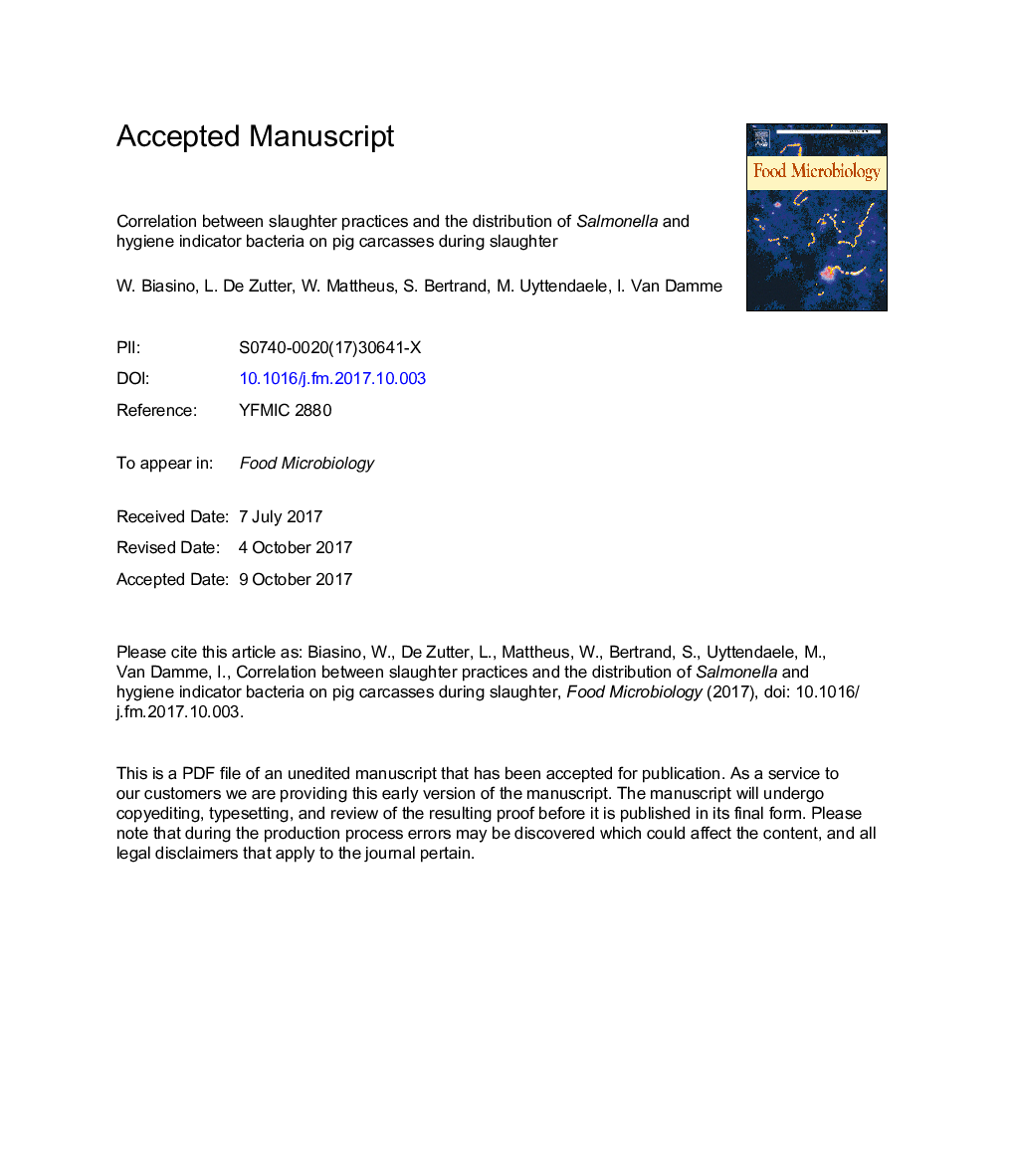| کد مقاله | کد نشریه | سال انتشار | مقاله انگلیسی | نسخه تمام متن |
|---|---|---|---|---|
| 8843616 | 1616231 | 2018 | 29 صفحه PDF | دانلود رایگان |
عنوان انگلیسی مقاله ISI
Correlation between slaughter practices and the distribution of Salmonella and hygiene indicator bacteria on pig carcasses during slaughter
ترجمه فارسی عنوان
همبستگی بین شیوه های کشتار و توزیع باکتری های سالمونلا و شاخص های بهداشتی در لاشه خوک در طی کشت
دانلود مقاله + سفارش ترجمه
دانلود مقاله ISI انگلیسی
رایگان برای ایرانیان
کلمات کلیدی
موضوعات مرتبط
علوم زیستی و بیوفناوری
علوم کشاورزی و بیولوژیک
دانش تغذیه
چکیده انگلیسی
This study investigated the distribution of hygiene indicator bacteria and Salmonella on pig carcasses. Moreover, the relation between hygiene indicator counts and Salmonella presence as well as associations between specific slaughter practices and carcass contamination were determined for each carcass area. Seven Belgian pig slaughterhouses were visited three times to swab five randomly selected carcasses at nine different areas, after evisceration and trimming. Information about slaughter practices was collected using a questionaire. In all samples, the E. coli and Salmonella presence was analyzed and Enterobacteriaceae and total aerobic bacteria were quantified. Average total aerobic counts ranged from 3.1 (loin, pelvic duct, ham) to 4.4 log10 CFU/cm2 (foreleg). Median Enterobacteriaceae numbers varied between 0.4 (ham) an 1.8 log10 CFU/cm2 (foreleg). E. coli and Salmonella presence ranged from 15% (elbow) to 89% (foreleg) and 5% (elbow) to 38% (foreleg), respectively. Positive relations were found between hygiene indicator counts and Salmonella presence at the head, sternum, loin and throat. Several slaughter practices, such as splitting the head and incising tonsils, were associated with higher levels of hygiene indicator bacteria and Salmonella. These findings can be used to educate slaughterhouse personnel and estimate the public health risk involved in consumption of different pork cuts.
ناشر
Database: Elsevier - ScienceDirect (ساینس دایرکت)
Journal: Food Microbiology - Volume 70, April 2018, Pages 192-199
Journal: Food Microbiology - Volume 70, April 2018, Pages 192-199
نویسندگان
W. Biasino, L. De Zutter, W. Mattheus, S. Bertrand, M. Uyttendaele, I. Van Damme,
